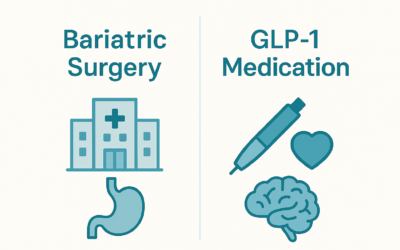Most people expect some side effects when they start a new medication, especially one that affects digestion and metabolism. With Ozempic, the usual suspects — nausea, diarrhea, and constipation — are well-known. But some people report experiencing one side effect they didn’t see coming: joint pain.
Officially, joint pain isn’t listed as a common side effect of Ozempic, but that hasn’t stopped people from asking the question: Can Ozempic cause joint pain? And more importantly, if you’re experiencing it, what’s actually going on?
There’s no simple yes-or-no answer here. While there’s no strong evidence linking Ozempic directly to joint pain, there are several possible reasons why it might happen—including how quickly you’re losing weight, how your body responds to inflammation shifts, and even how much water you’re drinking.
So, if you’ve noticed aching joints after starting Ozempic, you’re not alone. Let’s break down what the research says, why some people might experience joint pain, and what you can do about it.
Can Ozempic cause joint pain? What the research says
If you check the official prescribing information for Ozempic, you won’t see joint pain listed as a common side effect. The most frequently reported issues are nausea, vomiting, diarrhea, and constipation—things related to the way Ozempic slows digestion and affects metabolism.
But that doesn’t mean joint pain isn’t happening to some people.
In clinical trials, there were occasional reports of body aches and muscle pain, though these weren’t common enough to be considered a significant side effect. However, since Ozempic has been on the market, some users have reported new or worsening joint pain after starting the medication. Online forums, patient reviews, and even some post-market studies suggest that for a small percentage of people, joint discomfort might be part of the experience.
So, can Ozempic cause joint pain directly? Or is something else — like weight loss, inflammation changes, or even dehydration — playing a role? The answer isn’t completely clear, but there are some strong possibilities.
One of the biggest factors may be rapid weight loss. When a person loses weight quickly, their body mechanics shift, changing the way stress is distributed across their joints. Losing fat also means losing some of the cushioning around the joints, which can temporarily increase pressure on areas like the knees, hips, and lower back. For people with pre-existing arthritis or joint issues, this adjustment period can lead to stiffness, discomfort, or even increased pain before things improve.
Another possible reason is inflammation shifts. Fat cells aren’t just passive storage units; they actively produce inflammatory chemicals. When someone loses a significant amount of weight, inflammation levels drop — which is a good thing in the long run, but in the short term, these changes can sometimes trigger temporary aches, joint pain, and muscle stiffness as the body recalibrates. Some people even describe feeling like they have mild flu-like symptoms when going through major metabolic shifts like this.
Then there’s electrolyte balance and hydration—or rather, the lack of it. Since Ozempic reduces appetite, some people unintentionally eat and drink less than their body actually needs. When sodium, potassium, and magnesium levels drop too low, muscle cramps, stiffness, and even joint pain can follow. Dehydration also thickens joint fluid, making movement feel more sluggish and stiff.
A less common — but still possible — factor could be how Ozempic affects the thyroid and immune system. There have been rare cases of people developing mild thyroiditis (inflammation of the thyroid gland) while taking GLP-1 medications. Since thyroid function is closely linked to muscle and joint health, an irritated thyroid could contribute to aches and pains. However, this is extremely uncommon and not considered a primary cause of discomfort for most people. Some people also experience temporary immune system fluctuations when adjusting to new medications, which could add to the discomfort.
At the end of the day, while there’s no definitive proof that Ozempic itself directly causes joint pain, the way it impacts weight loss, metabolism, hydration, and inflammation could explain why some people experience it. The good news? In most cases, these aches and pains are temporary and improve as your body adapts.
Can Ozempic cause joint pain? What to do if it happens
If you’ve started Ozempic and are noticing joint pain, you’re not alone—but the good news is that, in most cases, it’s temporary and manageable. While there’s no direct evidence that Ozempic causes joint pain, there are several things you can do to minimize discomfort and help your body adjust.
The first step is giving your body time to adapt. If your joint pain started after rapid weight loss, it may simply be part of the adjustment process. When you lose weight quickly, your body mechanics shift, changing how pressure is distributed across your joints. This can put added strain on areas like your knees, hips, and lower back as they adjust to carrying less weight.
Some people with pre-existing arthritis or joint conditions may notice more discomfort at first, before things improve. The good news? In most cases, your body does adjust within a few weeks. Light movement, stretching, and even gentle strength training can help support your joints and reduce stiffness as your body gets used to these changes.
Staying hydrated and replenishing electrolytes is another simple but effective way to reduce joint pain while taking Ozempic. Because this medication suppresses appetite, many people don’t realize they’re drinking less water and eating fewer electrolyte-rich foods. In addition, having low levels of sodium, potassium, magnesium, and calcium can contribute to muscle cramps, stiffness, and joint pain. When you’re not eating as much, it’s easy to become mildly dehydrated, which can make joint discomfort worse. Drinking plenty of water, adding electrolyte-rich foods to your diet, or even using electrolyte supplements can help relieve stiffness and support healthy muscle function.
If your discomfort feels more like inflammation, consider supporting your joints with anti-inflammatory foods and supplements. Omega-3 fatty acids — found in fatty fish, walnuts, and flaxseeds — can help reduce inflammation in the joints.. Some people also find relief by adding collagen supplements, which may help maintain healthy cartilage in the joints. If you’re experiencing swelling or tenderness, applying warm compresses or soaking in Epsom salt baths may provide temporary relief.
And finally, another thing to consider is how you’re moving your body. When weight loss happens quickly, your muscles and connective tissues may lag behind, leading to temporary imbalances that can put extra strain on the joints. Doing low-impact exercises like walking, yoga, swimming, or cycling can help strengthen the muscles around your joints, reducing stress and preventing long-term discomfort. Mobility exercises — especially those focused on flexibility and joint stability — can also help your body adjust more smoothly.
Of course, if joint pain on Ozempic is severe, persistent, or getting worse over time, it’s always a good idea to check in with your medical provider. They can help rule out underlying conditions that may be contributing to the pain, adjust your dose if necessary, or suggest alternative medications if needed.
For most people, any joint pain associated with Ozempic is temporary and improves as the body adjusts. Taking a few simple steps — staying hydrated, moving regularly, and supporting your joints with proper nutrition — can help you get through the adjustment period more comfortably. And in the long run, weight loss itself may actually reduce joint pain by taking stress off your joints and lowering overall inflammation in the body.
Can Ozempic cause joint pain? The bottom line
Ozempic isn’t officially linked to joint pain, but some people do report it. And in most cases, the discomfort is probably due to the rapid changes happening inside your body rather than to the medication itself.
Losing weight — especially losing it quickly — changes the way your joints handle pressure, shifts inflammation levels, and can even lead to temporary imbalances in hydration and electrolytes. For some, that means a short-term increase in joint discomfort before things settle down. That said, if your joint pain on Ozempic is severe, persistent, or getting worse instead of better, it’s worth talking to your doctor to rule out any underlying issues and figure out the best way forward.
At the end of the day, Ozempic itself probably isn’t the problem — it’s the changes it’s triggering in your body. For most people, those changes are temporary, manageable, and well worth it in the long run. Learn more about Claya’s weight loss treatment programs for medically supervised weight loss.



